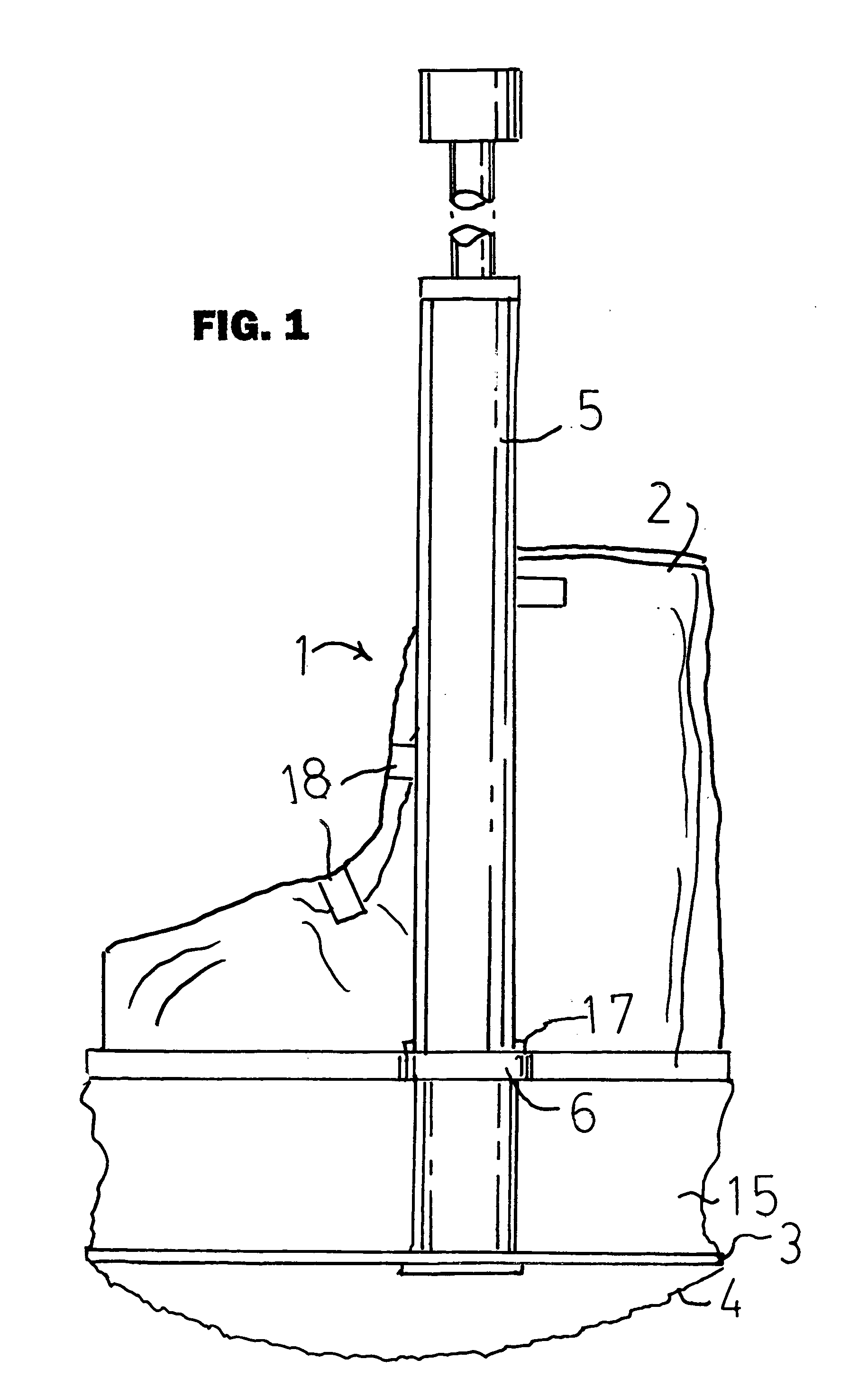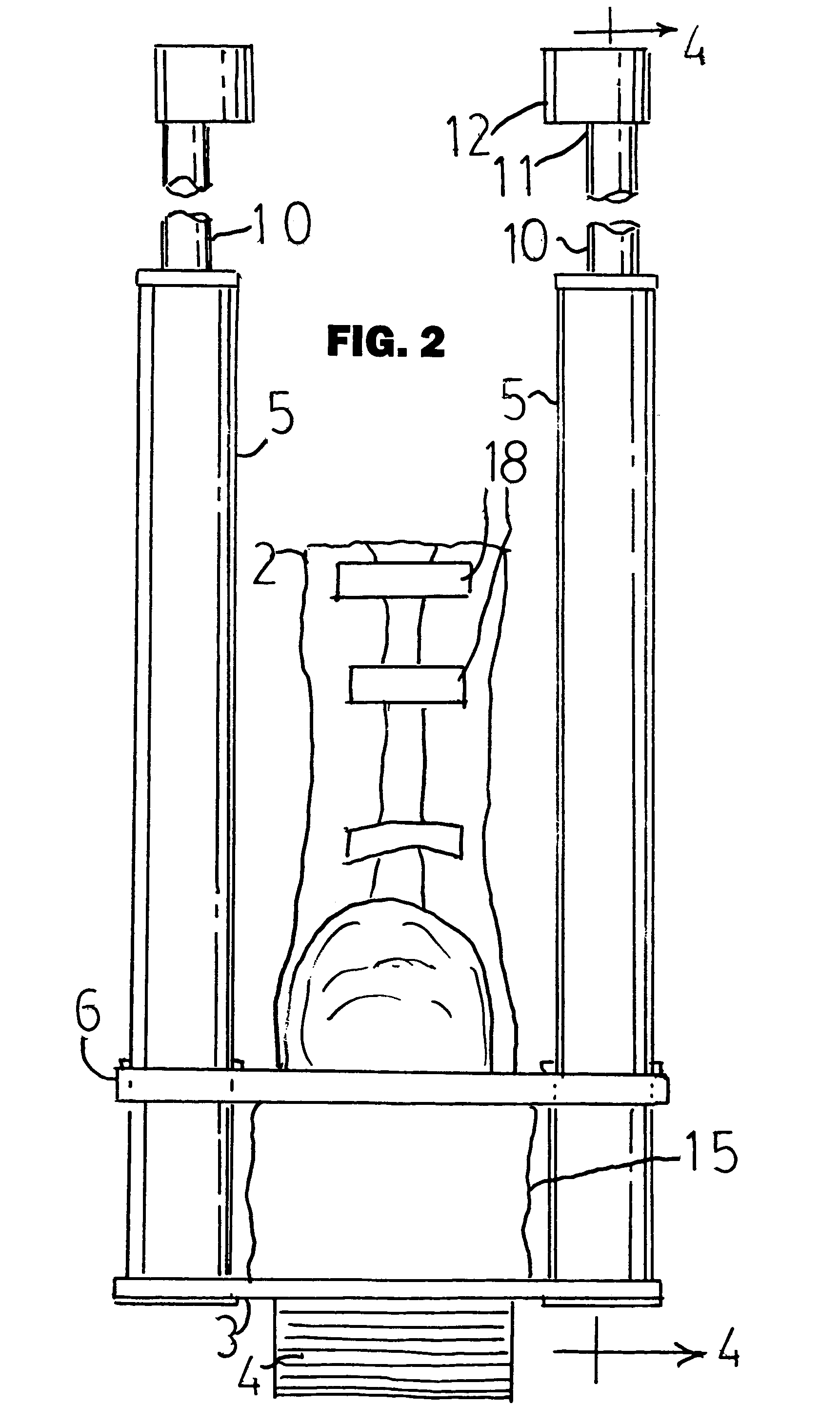Walking leg support
a leg support and walking technology, applied in the field of walking leg support, can solve the problems of not being able to be correctly reattached, easily removed, and affording little protection to the foot of the apparatus, so as to reduce shock and load, dissipate force, and be easy to remove and replace.
- Summary
- Abstract
- Description
- Claims
- Application Information
AI Technical Summary
Benefits of technology
Problems solved by technology
Method used
Image
Examples
Embodiment Construction
[0011]Referring now to the drawing Figures, the walking support 1 of the invention has a boot portion 2 for removably receiving the foot of a person who is in need of some means of reducing the shock received to the foot in walking. This may include people suffering from diabetic foot ulcers, fractures of the bones of the lower leg, foot, or ankle, for example. The boot portion 2 may be supplied with fasteners well known in the art, such as the hook and loop fasteners 18 shown. The leg may be in a cast, orthosis, brace, or the like. A subfloor portion 3 positioned below the boot portion has a resilient arcuate or rocker bottom surface 4 that hits the pavement first when walking. A pair of elongate tubular members 5 are affixed to the subfloor portion 3 and extend upward therefrom. The boot portion is slidably mounted by mounting means 6 so as to be freely movable up and down on the tubular members 5. A pair of elongate elements 10 have a first end 11 provided with means 12 for mount...
PUM
 Login to View More
Login to View More Abstract
Description
Claims
Application Information
 Login to View More
Login to View More - R&D
- Intellectual Property
- Life Sciences
- Materials
- Tech Scout
- Unparalleled Data Quality
- Higher Quality Content
- 60% Fewer Hallucinations
Browse by: Latest US Patents, China's latest patents, Technical Efficacy Thesaurus, Application Domain, Technology Topic, Popular Technical Reports.
© 2025 PatSnap. All rights reserved.Legal|Privacy policy|Modern Slavery Act Transparency Statement|Sitemap|About US| Contact US: help@patsnap.com



